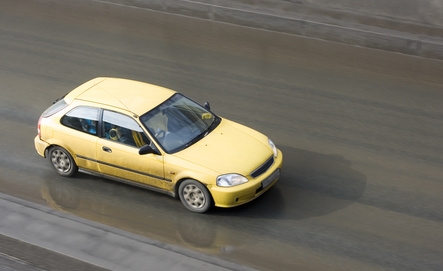
When car windows are hit by objects, they don't shatter because cars have laminated safety glass. It is made by placing a thin layer of clear, plastic film between two or more pieces of glass. The film keeps the glass from flying apart when it is hit, which helps keep the vehicle's occupants from being injured by shards of glass.
Safety glass was developed in 1903. Edouard Benedictus, a French scientist, accidentally knocked a glass flask off a shelf. When it broke, the pieces stayed together. Benedictus checked the solution that had been in the flask and discovered it had been made from cellulose nitrate. About the same time, he read an article that said shattered glass windshields in cars were injuring people. He came up with the idea to create safety glass, which he called Triplex. Auto manufacturers weren't interested in it at first because it added too much expense to the car.
During World War I, safety glass was used for the eyepieces in gas masks. It was easy to create small lenses out of safety glass. Automakers saw how well the safety glass worked to protect soldiers and began considering using the technology for cars.
Automobile safety glass developed along with the development of side windows in cars. According to Glasslinks.com, during the decade between 1919 and 1929, the passenger compartment on cars went from being mostly open to having side windows. Safety glass was first used in cars in 1927. Before safety glass, windshields could become weapons in an accident when they shattered on impact like a home window.
In 1928, Pittsburgh Plate Glass (PPG) introduced its version of safety glass, called Duplate. As designs improved, safety glass became more popular. By 1966, safety glass could be found in all passenger cars made in the United States. It is now a standard vehicle safety feature. Modern safety glass can withstand three times the impact velocity of windshields alone, according to Glasslinks.com.
Another form of safety glass in cars is tempered glass. It is used in the side and rear windows of most cars. Glass is formed to a contour and tempered with heat, which strengthens the glass to five to 10 times that of untempered glass. When tempered glass does break, it shatters into smaller, rounded fragments that are less likely to injure anyone.